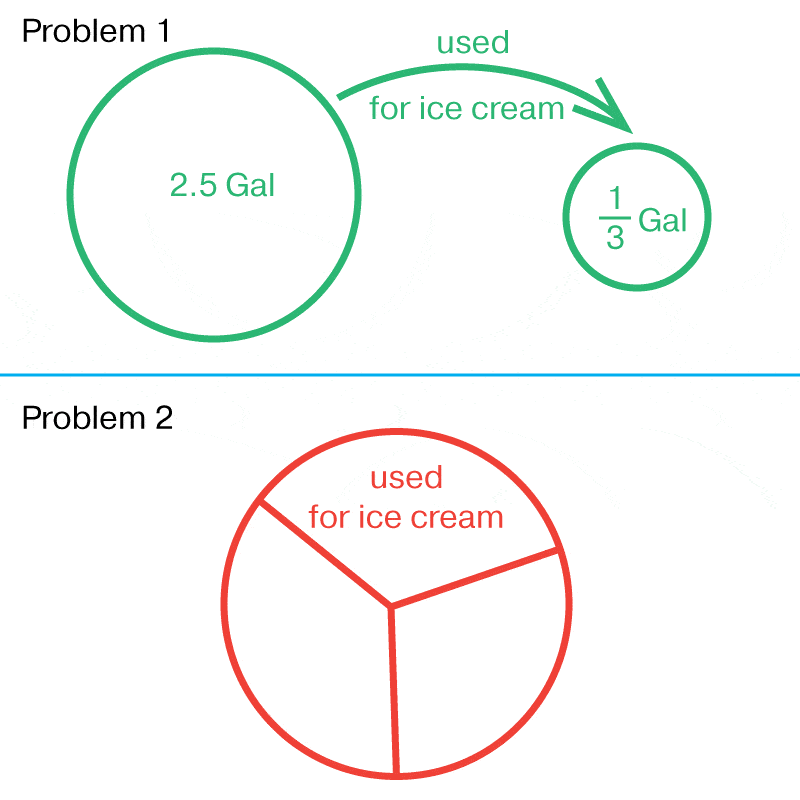Author
Math Country
Share
Author
Math Country
Share
During our tutoring practice, we noticed that many students need additional help with solving word problems.
We are not alone in this conclusion. Here is an article that proves our conclusion.
We believe that part of this responsibility lies in educators, who choose to teach to solve word problems the fast way instead of the proper way. Sometimes, children get cheat-sheets with key word used in math word problems. Something like this: example
The most common way, adopted by a school system, is:
- Read the problem
- Circle all the numbers
- Underline all trigger words
- Calculate
We definitely want you to NEVER EVER use this method!
While it is a quick way to make children solve word problems and show some results, it has a considerable downside:
- Children do not understand what a word problem is and how to solve it. Plus, it is only possible to memorize some of the keywords, not all of them.
- This method works ONLY for one-step problems when children know only two operations (addition and subtraction).
As you see, this is a falling practice. Children learn to concentrate on the numbers instead of the solution. Often, children cannot separate the solution from the calculations.
To be clear, let’s define what these words mean. A solution is a general way to solve a problem and does not involve any numbers. A calculation is when we put given numbers into our solution and get the answer for the problem.
For example, we have some apples, and a neighbor brings more. To find the total amount of apples, we must add the apples we have with the neighbor’s apples. We purposely did not use any numbers in this problem to show that the solution is independent of numbers. It also does not matter if it was apples or aliens. The way to solve this type of problem stays consistent.
We can put our numbers into this solution and get an answer. This is a calculation.
So, solving word problems requires two general steps: a) solution; b) calculation; and in this order only.
Why is it important to separate these steps?
When children start to solve multi-step problems, making calculations in the correct order is crucial. Children cannot avoid mistakes if they focus on numbers and filter the rest of the problem. It is a big difference between 8+6÷2 and (8+6)÷2. The numbers and operators are the same, but the results are different.
That is why we want to teach children to look for the solution first and make calculations after.
How to solve math word problems correctly?
One of the best ways to do this is to teach children to draw a diagram for a problem. This is not as easy as it sounds because instead of a diagram, children draw an illustration.
Let’s return to the problem with apples, children will spend 20 minutes and draw a table with 10 (or the exact number) apples and a neighbor with a bag of apples. If you change apples for chickens, children will redraw the picture with 10 chickens on the grass and 5 chickens nearby. If you ask to draw one diagram for both problems (with the same numbers), children will not understand what to do.
This is an excellent time to step up and teach children to use squares to show the number of objects. Also, teach them to use arrows in and out to show addition or subtraction. Practice this method until children ultimately adopt and understand it. To speed up this process, you can ask to make a new problem for the existing diagram.
The next step is to understand that any number can be inside the circle, and the process is the same. To do so, use the previous method, but in the end, circle each amount. As a result, children should have two circles connected with an arrow. Each of the circles represents a different amount. To make children more comfortable, let them put numbers inside the circles.
After children have learned to draw a diagram to one-step problems, they can solving multi-step word problems and improve this skill.
Now it is a time to practice! Use our 750 Word Problems Workbook.
Stay in the loop







